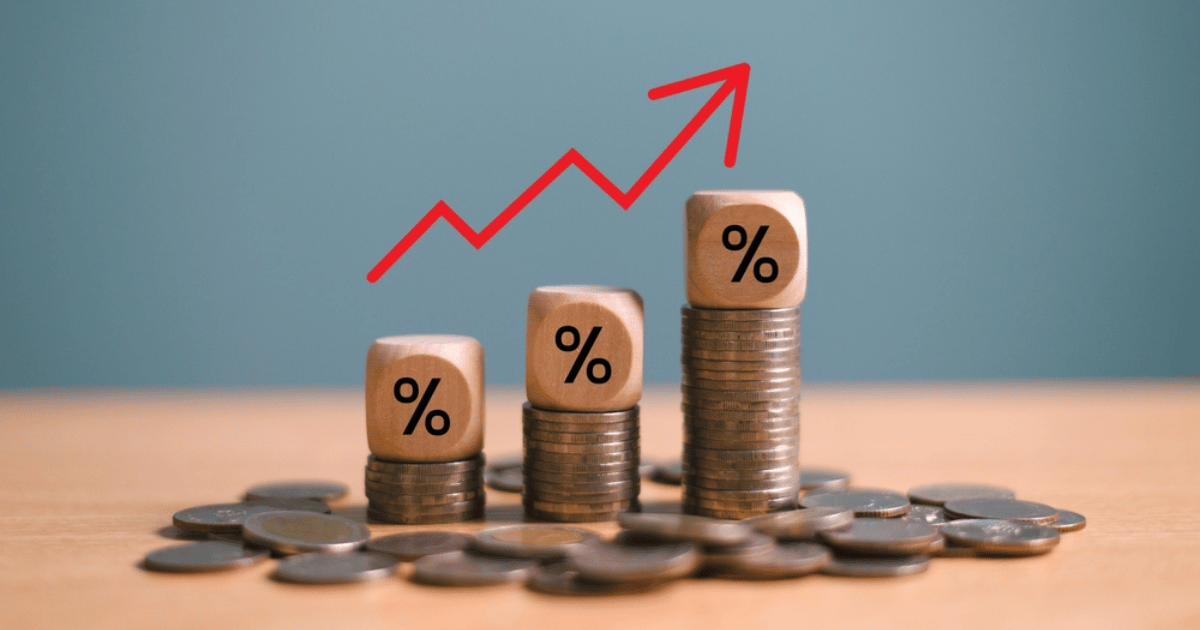How Trump's Tariffs & Trade Wars Affect the Economy

The S&P 500 rose +1.81% on April 10th, 2025, capping one of the most volatile weeks on Wall Street ever.
On April 2nd, the market dropped -4.84% ahead of President Trump's announcement that the U.S. would be placing a flat 10% tariff on almost all imports and additional reciprocal tariffs on imports from countries which had existing tariffs and other trade barriers against the U.S.
Tariffs ranged from 10% up to 50%, depending on the country.
The market plunged after hours and the following trading day. In all, the S&P was down -5.97% by market close on Thursday, April 3rd.
Then, on April 8th, the Trump administration announced a last-minute reprieve — a blanket U.S. tariff of just 10% — on all countries (except China) until July.
China was the only country to retaliate against the president's reciprocal tariffs. It responded to the administration's extra 34% tariff on its goods by adding a 34% tariff of its own. President Trump then increased the Chinese tariff from 34% to 125%, which China matched. The president then increased the Chinese tariff to 145%. Both the US and China have since exempted some imports.
Stocks surged on the news of a 90-day delay, finishing the day up +9.52%.
Still, the S&P is down roughly -9.5% since the White House first announced tariffs on February 2nd, and many investors are still unsure of what effects those tariffs will have on the stock market, inflation, and the economy.
Here's what you need to know about the Trump administration's tariffs, and how they will affect trade and the economy.
What is a tariff?
A tariff is a duty (a tax) imposed by a government on imports of goods from other countries.
Besides being a source of revenue, tariffs are most often used to regulate foreign trade. By imposing tariffs on imports from foreign countries, governments can protect and encourage domestic production.
For example, if the U.S. can produce a tire for $100 and China can produce and ship it for $80, the U.S. will import most of its tires from China.
However, if there's a 50% tariff on Chinese imports, the tire from China will cost $120, making the $100 U.S. tire the more affordable option (and the one consumers will buy).
As in the example, the goal of tariffs is to replace foreign imports with domestic products and to incentivize local production and consumption.
While this may sound beneficial, because they make things more expensive, tariffs lower economic growth and citizens' quality of life for the tariff-levying country.
Are tariffs good for the economy?
There is a near unanimous consensus among economists that tariffs are self-defeating.
While tariffs can increase domestic production, the net economic effects are negative.
Going back to the example above, imagine you own a tire shop. There are three parties involved: you (the store owner), your customers, and your suppliers.
With no tariffs in place, you buy most of your tires from China for $80 each, which is $20 cheaper than the equivalent tire made in the U.S. You sell the tires for $100 and make a profit of $20 per tire.
Now, imagine there's a 50% tariff on all Chinese goods, and it costs $120 for each tire imported from China. You would start buying your tires from the U.S. manufacturer for $100 each and, to maintain your profit, would raise prices to $120.
Here are the results:
- Consumers pay $20 more for the same tires
- Your profit margin decreased from 25% to 20%
- U.S. tire manufacturers sell more tires (and Chinese tire manufacturers sell fewer)
The only party that benefited from these tariffs was the U.S. tire manufacturer.
This is the case wherever there is a tariff — the only party that benefits is the domestic producer*. And they benefit at the expense of the consumer and others.
*Not all goods have domestic equivalents, in which case the only effect of a 50% tariff would be a 50% increase in cost. Even if there is a domestic equivalent, it can take years to ramp up production to satisfy all of the demand, which may result in even higher prices.
Why free trade (without tariffs) is better
When countries trade freely, each country can focus on what they do best and trade with other countries for everything else they need.
This is known as comparative advantage.
For instance, if Brazil can grow coffee more efficiently and with better flavor than the U.S., and the U.S. can manufacture airplanes more efficiently than Brazil, both countries are better off by trading with one another.
Even if one of the countries is better at producing everything, it still benefits from trade by focusing on what it does best.
Imagine the U.S. can produce both wheat and microchips more efficiently than Argentina. Still, if Argentina is relatively better at growing wheat, and the U.S. is relatively better at making microchips, both countries win by trading. Resources flow to where they're used most efficiently.
This leads to lower costs, higher productivity, and stronger growth.
Multiply this behavior across entire economies throughout the world, and everyone ends up with the best products at the lowest prices. Consumers in every country benefit.
On the flip side, without free trade, consumers usually end up paying more for worse products.
For instance, the cost of an iPhone 16 Pro — which is primarily made up of components from Taiwan, South Korea, and China — is $1,199.
Some analysts estimate that a “Made in the USA” iPhone could cost as much as $3,500, and that's if Apple (AAPL) were to spend $30 billion (and several years) to build out a domestic supply chain.
Watch this video to see the incredible complexity and worldwide coordination that goes into manufacturing something as common as a pencil.
Free trade also drives innovation.
When companies face global competition, they have to get better by improving their product and/or reducing their costs. In either case, the consumer benefits.
Of course, not everyone wins in the short term. Some industries shrink or disappear entirely when faced with foreign competition.
But that only happens when a country can get better goods at lower prices through importing, which is beneficial for consumers. Some jobs may be lost, but those workers can move into more competitive sectors over time.
Are tariffs ever useful?
Tariffs aren't always bad — in some cases, they serve a strategic purpose.
Countries can use tariffs to protect nascent industries (like semiconductors) that need time to grow before facing global competition. Without that support, those industries might never gain enough traction to compete with bigger players.
Tariffs can also be useful for national security, as they can reduce a country's reliance on foreign suppliers, especially for critical resources like semiconductors or energy.
In a conflict, an overreliance on foreign imports can leave a country vulnerable.
Why is Trump imposing tariffs on foreign countries?
According to the Trump administration, the tariffs serve two purposes: to incentivize domestic manufacturing and to leverage trade negotiations.
One of President Trump's stated objectives is to encourage companies to relocate production to the United States. By imposing tariffs on imported goods, he is incentivizing businesses to manufacture — and create jobs — domestically.
However, the president's main purpose for the tariffs is likely as a bargaining tool in trade negotiations — an argument supported by the use, and calculation methodology, of the “reciprocal” tariffs.
In addition to the baseline 10% tariffs on all imports, Trump imposed reciprocal tariffs on countries with existing tariffs and other trade barriers on U.S. goods.
Unlike their name suggests, the reciprocal tariffs were not calculated based on a country's existing tariffs on U.S. goods.
Instead, they were calculated by taking the trade deficit of a particular country, dividing that by the total goods imported from that country, and then dividing that by two.
For example, the U.S. has a $235.6 billion trade deficit with the E.U. on total imports of $605.8 billion, or 39%. That number was divided by two, and a 20% reciprocal tariff was applied to the E.U.
These tariffs are claimed to level the playing field for American exporters and to encourage countries to reduce or eliminate their taxes and barriers on U.S. goods.
As long as the tariffs are meant to eliminate foreign trade barriers and will be reduced or removed once deals are made — quickly — the net economic effect may be positive.
If not, and if Trump plans on leaving the tariffs in place with the goal of increasing U.S. manufacturing, the net effect will be negative.
Tariffs and (short-term) economic growth
Because they increase prices and leave consumers and businesses with less money to spend, tariffs slow economic growth.
Theoretically, tariffs should encourage producers to shift some of their production to the U.S., but that only works if businesses believe the tariffs are here to stay.
In reality, most companies see President Trump's tariffs as temporary — primarily as a tool for trade negotiations. Why invest time and billions of dollars building factories or reshoring supply chains if the tariffs might be gone by the time the project is finished?
This uncertainty is discouraging investment at the very moment it's needed to support domestic production. Instead of creating a manufacturing boom, the threat of tariffs may completely stall economic momentum.
Lower consumer spending and lower business investment are two key drivers of GDP, and they're pulling in the wrong direction.
The threat of a recession is real, and the stock market has been reflecting that risk. The uncertainty around tariff policy is also affecting businesses and consumers.
Tariffs and inflation
While tariffs certainly increase the cost of certain goods, that does not necessarily mean they are inflationary.
Inflation is the rate at which the aggregate price of goods and services increases over time. It is the increase in the general level of prices, simultaneously, not an increase in the price of an individual good (like eggs, gas, or car tires).
Tariffs increase the cost of certain goods but those price increases leave less money to be spent on other goods and services, thereby lowering demand — and prices — for those other goods and services.
If upward pressure on one good (car tires) is offset by downward pressure on another good (gasoline), aggregate prices will not change and there will be no inflation.
However, President Trump's tariffs are likely to cause higher prices on a broad range of imported goods.
If more prices rise than fall across the entire economy of goods and services, aggregate prices will be higher, and the tariffs would be inflationary.
To learn more about where inflation comes from, read my article on What Causes Inflation?






